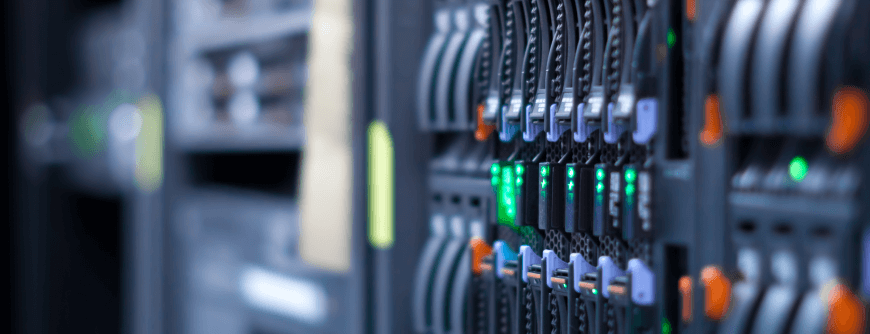What Are the Components of a Rack Server?
A rack server has all the components of a tower server, just in a much more compact space. Rack servers have a CPU, memory, storage, network interface cards, video, and fans for cooling. There are usually handles on each side of the chassis to make it easier to insert the server into the rack or remove it for maintenance.
Because they’re much more compact, the components in a rack server are much smaller, but they have much more high-powered resources for networking and supporting applications. They’re usually more expensive than a tower server because of their compact size and high-end resources.
How Does a Rack Server Work?
Instead of a large tower, a rack server is a standard width, height, and depth that fits into a rack mount. The components are compact so they fit into the server chassis, but the way a server executes applications is the same to end users and administrators. Rack servers usually have higher-end components than a standard small business server such as a tower, but it works in the same way.
One aspect of a rack server that is different from a tower is the noise that is created from fans used to cool them. The high-powered computing resources generate more heat than a standard computer, so they need additional cooling. The fans are loud, making most server rooms noisy.
Reasons to Use a Rack Server
If you need more computing power for users and network applications but don’t have the real estate to house additional tower servers, building a rack system in a server room is a great option. These servers are much smaller, so they’re the next best step for small businesses that need to house several servers.
You first need to install the rack into the server room and identify the number of rack units (U) the rack supports. Rack servers are measured in these rack units so that you can identify the number of servers that will stack vertically within your server room. For example, you can usually fit 22 2U rack servers into a 42U rack. Any size rack server can be easily removed and diagnosed, which is a benefit over tower servers for administrators.
Another advantage of a rack server over a tower is that most of them offer hot-swappable options. Instead of powering down a server to install storage, you can remove the old drive and add a new one while the server continues running. This option is great for enterprise servers that must stay powered on to support users around the clock.
Reasons Not to Use a Rack Server
If you don’t have a server closet with a dedicated space to build out a rack, then a rack server might not be the right option for you. They’re also louder and produce more heat, so they need to be in a space with good cooling options and away from employees. Several rack servers stacked in a rack could interfere with employee productivity, so they should be behind a closed door in a cool room.
The rack itself is grounded, and static electricity is an issue with machines. The server closet shouldn’t be carpeted and the rack must be properly installed to avoid surges that could destroy every server mounted in the rack. You need the right environment and server equipment to host a rack server farm, which can be quite expensive.
Conclusion: Save Data Center Real-Estate with Rack Servers
If you have a small network with tower servers, rack servers are a step in the right direction for enterprise-level networking. They provide more computing power in a fraction of the space, so they can save you money on real estate. You need the right environment, cooling, and humidity control for your server room to host these machines, but if you install every server properly, you can power a large enterprise office with just a few servers.






